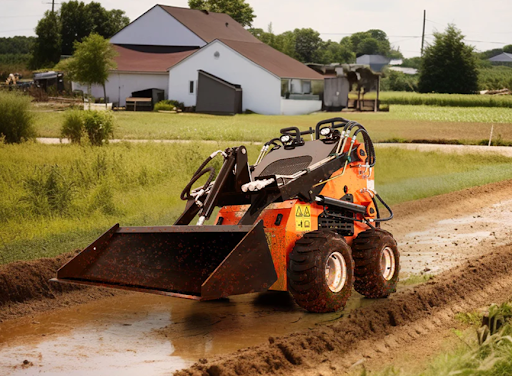The Role of Mini Skid Steer Loaders in Urban Construction

Introduction
Urban construction is a different beast. Space is tight, timelines are fast, and disruptions need to be minimized. Whether you’re prepping a backyard for landscaping or installing utility lines in a bustling city block, there’s not much room for error—or for bulky machinery. This is where mini skid steer loaders shine. Compact, powerful, and incredibly versatile, these machines are purpose-built for urban job sites. Let’s dive into how and why they’re becoming essential tools in modern construction.
What Is a Mini Skid Steer Loader?
A mini skid steer loader is a small, stand-on or walk-behind machine designed to perform many of the same tasks as a full-size skid steer—but in much tighter spaces. Unlike mini excavators, which are primarily designed for digging, mini skid steers focus on material handling, grading, and a variety of other tasks through interchangeable attachments. Typically weighing under 4,000 lbs and measuring less than 4 feet wide, these machines are nimble yet surprisingly powerful.
Urban Construction Challenges Mini Skid Steers Help Solve
Urban construction presents a unique set of challenges:
- Limited Access: Many sites are surrounded by buildings, fences, or other barriers.
- Noise and Emissions Regulations: Cities often have strict requirements to reduce disturbance.
- Labor Shortages: Crews are smaller, and productivity needs are higher.
- Time Constraints: Projects often require phased work with minimal downtime.
Mini skid steers meet these challenges head-on with their compact size, low operating noise, and multi-functionality.
Key Benefits in Urban Settings
1. Compact Design, Big Output
Mini skid steers can pass through standard gates, alleyways, and even fit into elevators in some cases. Despite their size, they can move materials, level terrain, and even handle light demolition tasks.
2. Efficiency and Labor Savings
Instead of assigning multiple crew members to haul debris or trench by hand, one operator with the right attachment can complete the same job faster and with less fatigue.
3. Lower Operational Costs
They consume less fuel, require less maintenance, and can be towed with a standard trailer—reducing both upfront and ongoing expenses.
4. Minimal Site Disruption
The lighter weight of mini skid steers means they leave less damage on sidewalks, lawns, or finished surfaces, making them ideal for sensitive urban environments.
Common Urban Applications
- Site Preparation: Grading small lots, prepping driveways or patios.
- Material Handling: Moving soil, mulch, gravel, and pallets in tight spaces.
- Utility Installation: Digging shallow trenches for cables, gas lines, or irrigation.
- Demolition: Breaking up small concrete pads or removing old landscaping features.
- Landscaping: Transporting plants, leveling ground, or spreading materials.
Popular Attachments for Versatility
- Buckets (standard and 4-in-1): For digging, grading, and backfilling.
- Augers: Great for fence posts, signs, and tree planting.
- Trenchers: Ideal for installing utilities quickly.
- Pallet Forks: Useful in material transport.
- Sweepers: Clean up after construction with ease.
- Hydraulic Breakers: Handle small-scale demolition projects.
Tip: Investing in the right attachments can turn your mini skid steer into a multi-tool workhorse that pays for itself quickly.
Real-World Success Example
A small landscaping company in Boston used a mini skid steer loader to complete a series of tight backyard makeovers. Before adding the machine, their team averaged one project every two weeks. After? One project per week, with the same crew size. Faster completion led to more bookings, and the machine paid for itself in six months.
Choosing the Right Machine
When selecting a mini skid steer, consider the following:
- Power Source: Gas and diesel are common, but electric models are growing in demand for indoor or emissions-restricted zones.
- Tracks vs. Wheels: Tracks offer better traction on soft or uneven ground, while wheels are ideal for paved surfaces.
- Hydraulic Flow: Match the machine’s hydraulic capabilities to your desired attachments.
- Size and Weight: Ensure it fits through necessary access points and can be transported easily.
For those looking for a reliable and versatile option, AHM mini skid steer loaders are worth considering. They offer a balanced mix of power, compact design, and a wide range of compatible attachments, making them ideal for various urban construction challenges. Plus, their reputation for durability and dealer support means you can invest with confidence.
Final Thoughts
Mini skid steer loaders aren’t just compact machines—they’re compact solutions. In a field where time is money and space is premium, having a tool that’s flexible, efficient, and budget-friendly is a clear advantage. Whether you’re tackling residential builds, commercial landscaping, or utility upgrades, don’t overlook the impact this small machine can have on your productivity.




